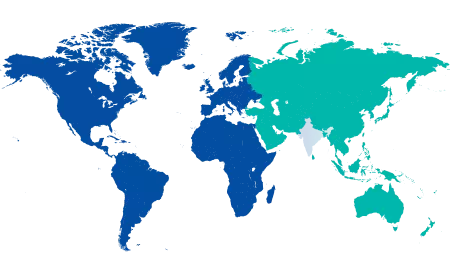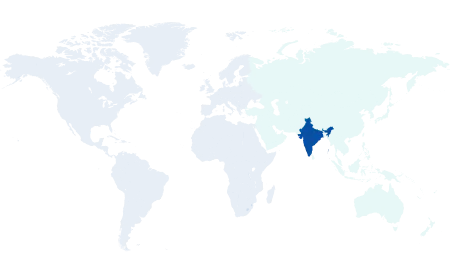
Have you ever looked into a mirror and observed red patches on your tongue that seem to change shape or move around? If so, you may have something called geographic tongue, a condition that is harmless but puzzling.
Synopsis
What Is Geographic Tongue?
Also called benign migratory glossitis or erythema migrans, geographic tongue is a very common, yet harmless condition of the top and sides of the tongue. True to its name, geographic tongue does looks like a map. Its name comes from red patches of various shapes, often bordered with white or yellow, which move around and change shape over time. These changes happen because the thin layer of cells on the tongue (called filiform papillae) shed and regrow in different areas. This condition often persists for days, months and in some cases, even years.
Common signs and symptoms
Typical symptoms of geographic tongue include:

-
Smooth, irregular shaped sore-like patches that appear on the inside of your tongue, generally towards the top or sides.
-
Patches that frequently change shape, size and location.
-
Sensations of pain or burning, particularly when eating foods that are spicy or acidic.
If the aforementioned symptoms do occur, they usually tend to go away on their own, but may reappear at some point in the future. Most people however, show mild or no symptoms at all.
What causes this condition?
Doctors don’t know exactly what causes geographic tongue, but genetics may play a role—it can run in families. It’s also more likely to appear during periods of stress, or in people who already have a condition called fissured tongue (grooves or cracks on the tongue).
The condition affects around 1.5 to 2.5% of people and can affect anyone, irrespective of their gender. It is generally a benign, non-cancerous condition that is neither painful nor dangerous. In fact, it is considered more of a variation in how the tongue looks rather than a disease.
Some people experience a burning or stinging sensation when eating spicy, salty, or acidic foods. Certain foods like tomatoes, citrus fruits, kiwi, walnuts, or other nuts may trigger discomfort. Others discover this condition only when looking into the mirror or while dealing with burning mouth syndrome.
Is Treatment Required?
In most cases, the condition improves with time. It tends to fluctuate and often becomes less noticeable with age. Treatment isn’t usually necessary, with reassurance and education being sufficient to alleviate any concern.
If symptoms are bothersome:
-
Topical anesthetics may provide temporary relief.
-
Avoidance of any foods that may produce discomfort.
-
Stress management may also be helpful.
Very rarely, physicians may recommend antihistamines or mild steroids, but these are not standard treatments.
Final Thoughts
Geographic tongue may be astonishing to look at, but it is completely harmless. There is no risk of cancer and permanent damage, and hence no reason to worry. For some people, the condition may cause anxiety or be embarrassing due to its appearance. If you ever have any doubt or discomfort, talk with your dentist or physician. They will reassure you and provide you instructions if any care is necessary.
For expert guidance, consult the best Dental Medicine doctor in Old Airport Road, Manipal Hospitals to address any concerns related to geographic tongue or other oral health issues.
FAQ's
Geographic tongue is a common condition that can affect people of all ages, including children. It is estimated to affect about 1 to 2.5% of the population. The name comes from the way the tongue's surface looks—like a map, with patches that change in colour, shape, and size. These patches can pop up in multiple places and may even disappear for a while before coming back. People who have geographic tongue often also have a fissured tongue, which has deep grooves or cracks.
No, geographic tongue is not contagious. You can't pass it on to anyone else.
For most people, geographic tongue doesn't cause any symptoms and doesn't require treatment. However, some people might feel a burning or stinging sensation on their tongue. If this happens, a doctor might recommend topical anaesthetics to numb the area or anti-inflammatory medications (like cortisone-like drugs) to help with the discomfort.
No, there is no evidence that geographic tongue can cause cancer. A biopsy is usually not needed to diagnose the condition because a doctor can typically identify it just by looking at the tongue.





















 4 Min Read
4 Min Read




.png)


.png)








